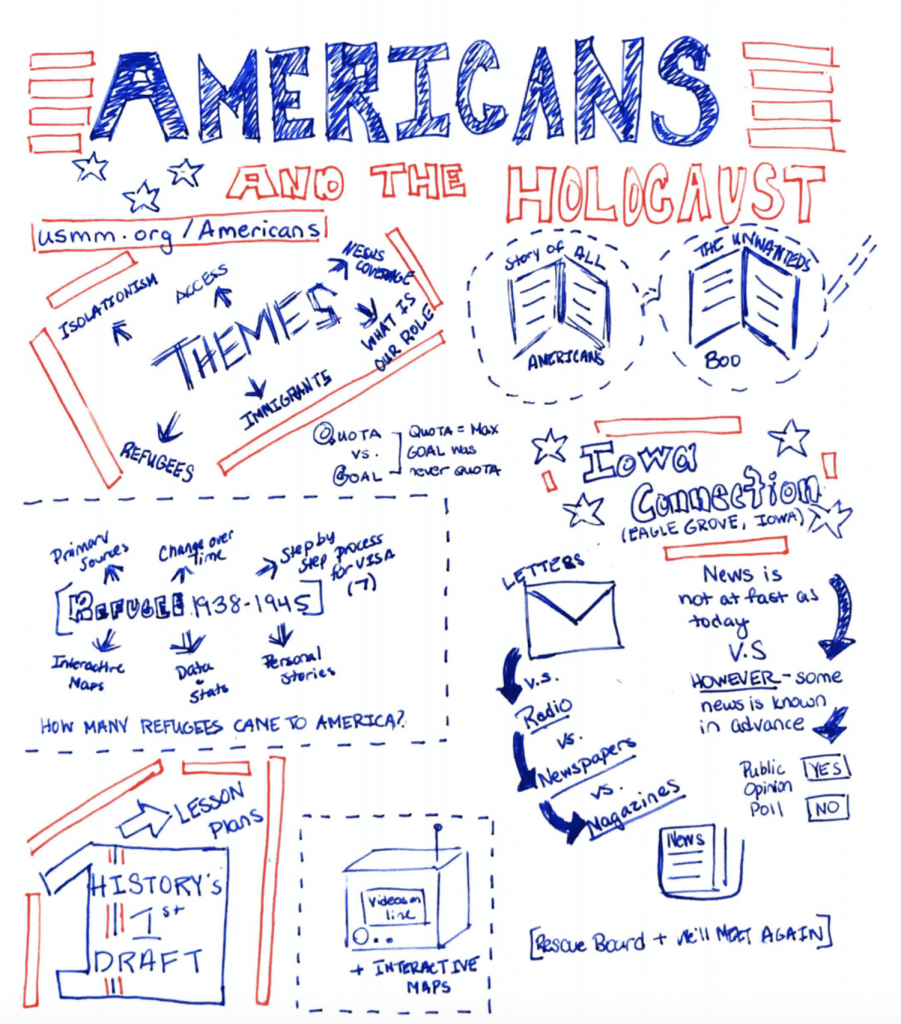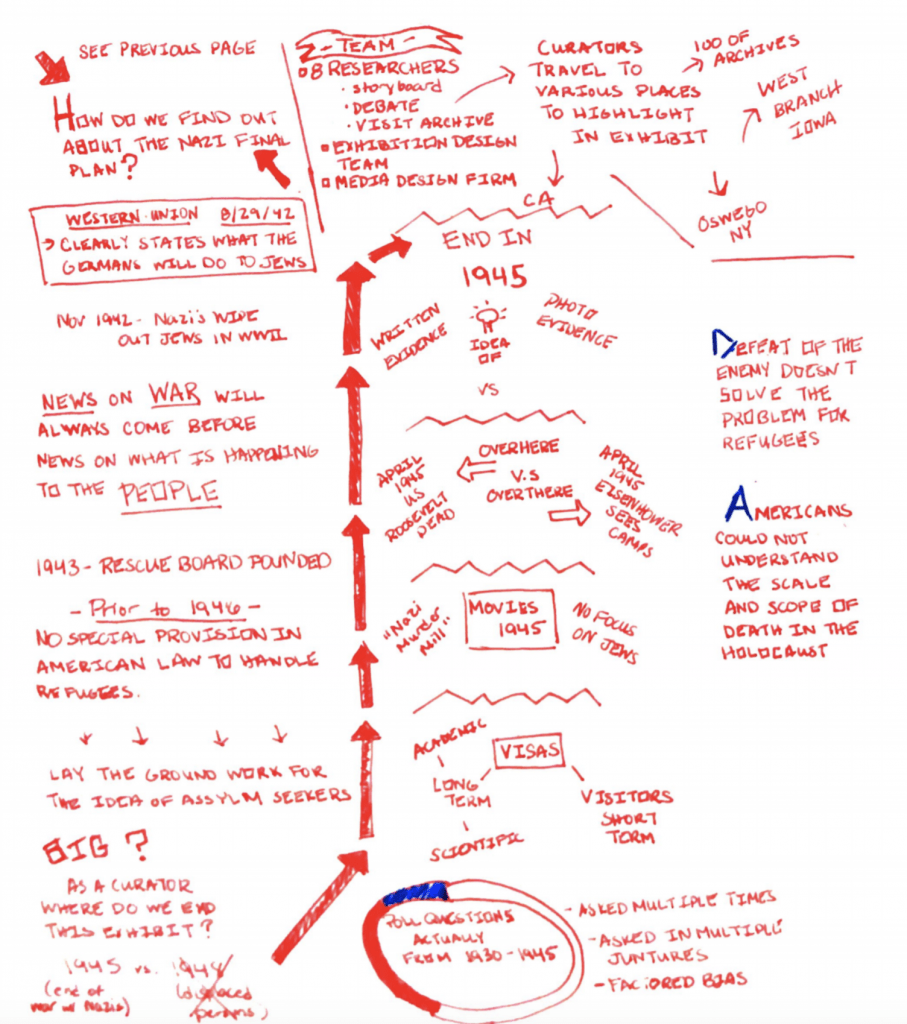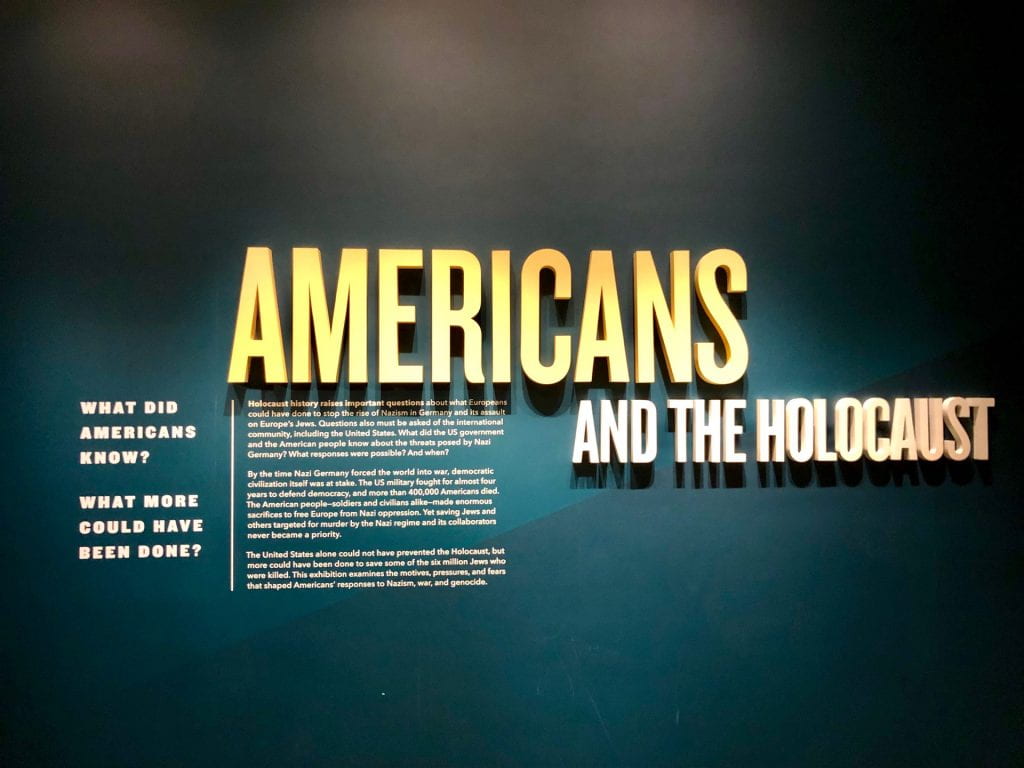
For our official last day of the conference our focus was on Americans and the Holocaust – specifically the brand new temporary exhibit housed both at the Museum and online. Our morning began with an introduction to this exhibit from Rebecca Erbelding. The overview was imperative as I learned the guiding questions that helped to focus the creation of this exhibit. Questions such as, how did leaders, diplomats, and citizens of the United States and other countries respond to events of the Holocaust and WWII, and which institutions and individuals aided and protected Jews from persecution between 1933 and 1945, were questions I had never really grappled with, even as a teacher. I immediately knew this exhibit was going to provide me what a new layer of thinking. Another critical element of Ms. Erbelding’s introduction was sharing the themes within this exhibit, which included isolationism, access to resources, refugees, immigrants, news coverage and the role of Americans.
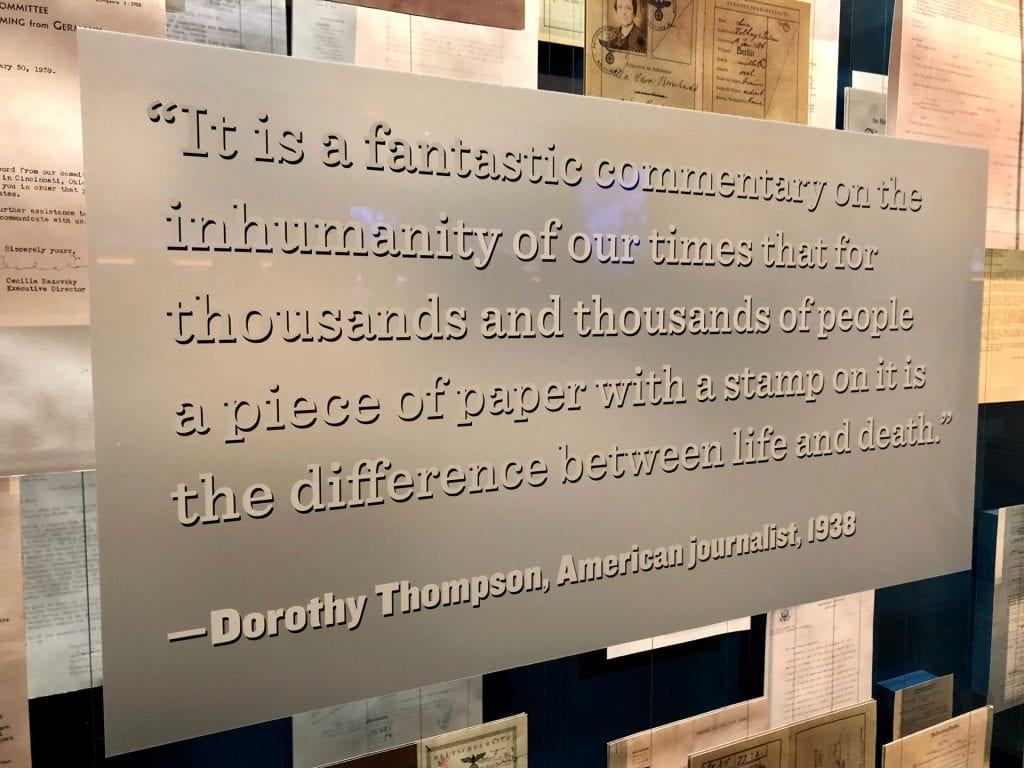
I found it fascinating that creating this exhibit was a four and a half year process and the curators began designing this exhibit through a timeline. Using this timeline method helped currators to tell all parts of this story from the isolationism that took control of the country after WWI, to the boundaries of who could become an American in the early 1920’s, to the economic depression and finally to the Nazi’s very open and public policies towards Jewish individuals. The timeline also guided curators when gathering materials to explain to visitors the extensive refugee crisis that began in the 1930s, which in turn helped to address a major misconception of “why didn’t Jewish people just leave Europe”.

Prior to our entrance to this new section of the museum, my fellow teachers and I were asked several questions to consider while walking through the exhibit. Questions I made a connection with included: How do Americans respond when democracy falls? Why do people go against the grain to do what they do? We call ourselves a nation of immigrants, but why do we have politics that go against that? These are not easy questions with easy answers. With our current Holocaust curriculum I don’t address any lessons regarding Americans and the Holocaust and this morning I was thrilled to learn from all that this exhibit had to offer. With nearly two hours to walk through, I headed off to learn what information was available to Americans on the events occuring in Europe and why so few individuals took the risk to help fellow humans in need.
With so much included within this exhibit, I’m going to highlight the elements that had a direct impact on me. Please see the link below to see the online exhibit and to see all featured resources. One of the elements I found powerful were sections that provided an overview of what was happening during that year. To me this connected directly with the idea of humanizing history – it helped me to understand what Americans were facing at that specific point in time and how isolationism began to run rampant across the United States.
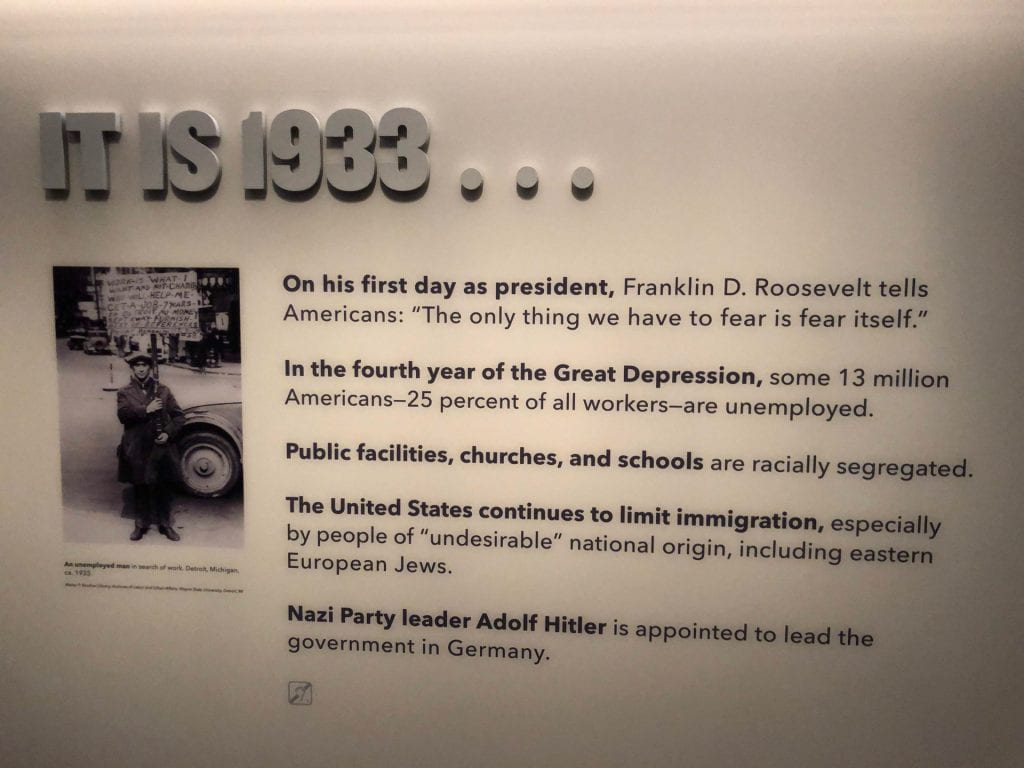

The next section of the exhibit that I found fascinating was the “Nazism in the News” section. I learned that throughout the 1930’s American newspapers often reported on both Hitler and the Nazi regime. Since newspapers served as one of the major modes for Americans to learn what what going on in the world, many read about the persecution of Jews, Communists and other political opponents. However, even though Americans read about the dehumanizing events taking place, many did not believe that this persecution would eventually result in what we now know is genocide. This section of the exhibit was also interactive as visitors can use the digital smart board to choose the state they are from and locate newspapers from their areas that were reporting on Nazism in the news. My colleagues and I were able to find an article from the Des Moines register entitled “‘I’m An Exile’ Says Einstein”. After reading the article and looking further into this newspaper, we discovered this article wasn’t even considered front page news. On the contrary, an article titled “Youth Denies Theft of $50 Worth of Candy” did make the front page. I immediately thought back to the question of how Americans responded to Nazism. Clearly with this not being front page news, those in charge of the Des Moine register printing did not feel this was an article that would get a wide response from the American public, nor would it get readers attention enough to be on the front cover.
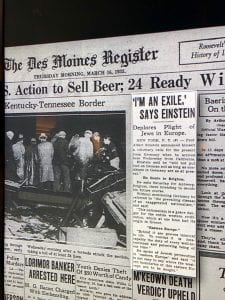
Another section that I found to be particularly intriguing was the “Challenges of Escape” section. One element that we do include within our curriculum is a two day study of the SS St. Louis, an ocean liner that set sail from Hamburg, Germany to Havana, Cuba. The majority of the passangers on board were Jewish and this ship symbolized one of their last hopes to escape the persecution they faced in Nazi Germany. In this section of the exhibit, I learned more about the quotas put in place starting in 1924 that limited the number of immigration visas granted. I was shocked to learn that after 1938 only 27,370 people born in Germany could immigrate to the US each year.
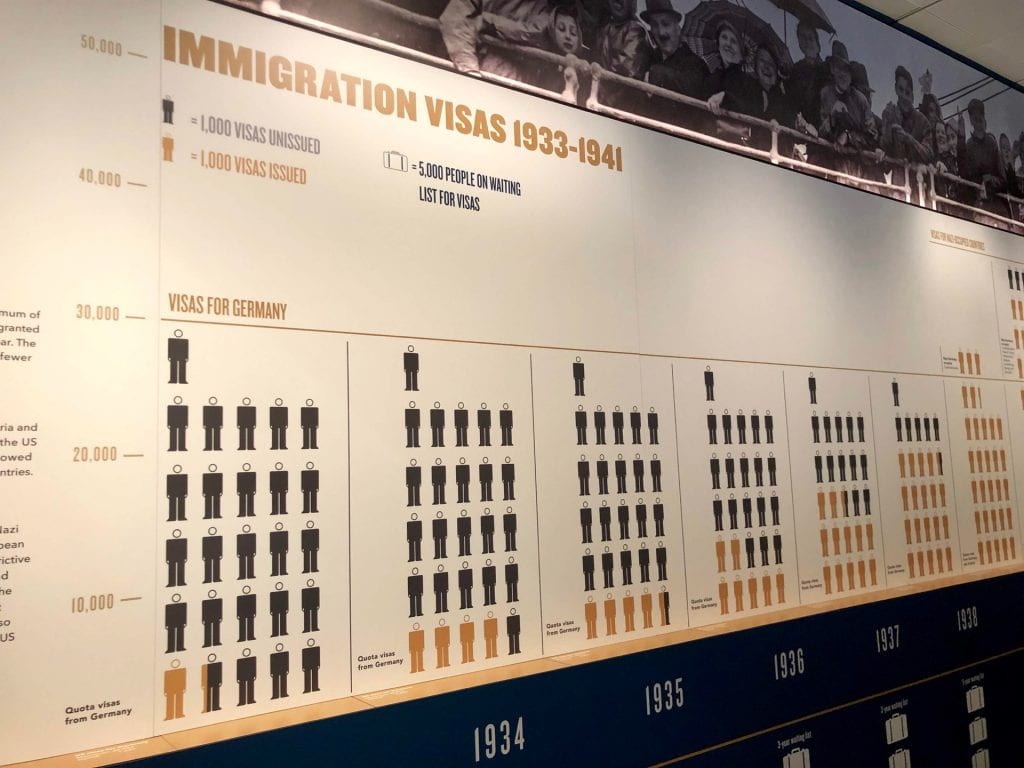
An important component of immigration that I want to bring back to my classroom are the many types of documents individuals had to acquire prior to obtaining visas. As a 6th grade teacher, many of my students have a difficult time wrestling with the idea that those who were being persecuted by the Nazi’s couldn’t “just leave” their country and enter another. Seeing the variety of documents, including identity papers, police certificates, medical clearances, tax documents, travel tickets and exit permits, provided me with a stronger understanding of this process, as well as a few ideas on how I can take this part of history to a deeper level with my students. In fact, the USHMM has created an interactive piece to their online exhibit entitled, “What did Refugees Need to Obtain a US Visa in the 1930’s?” (see link below). This is a perfect resource to use in any middle school or high school classroom.
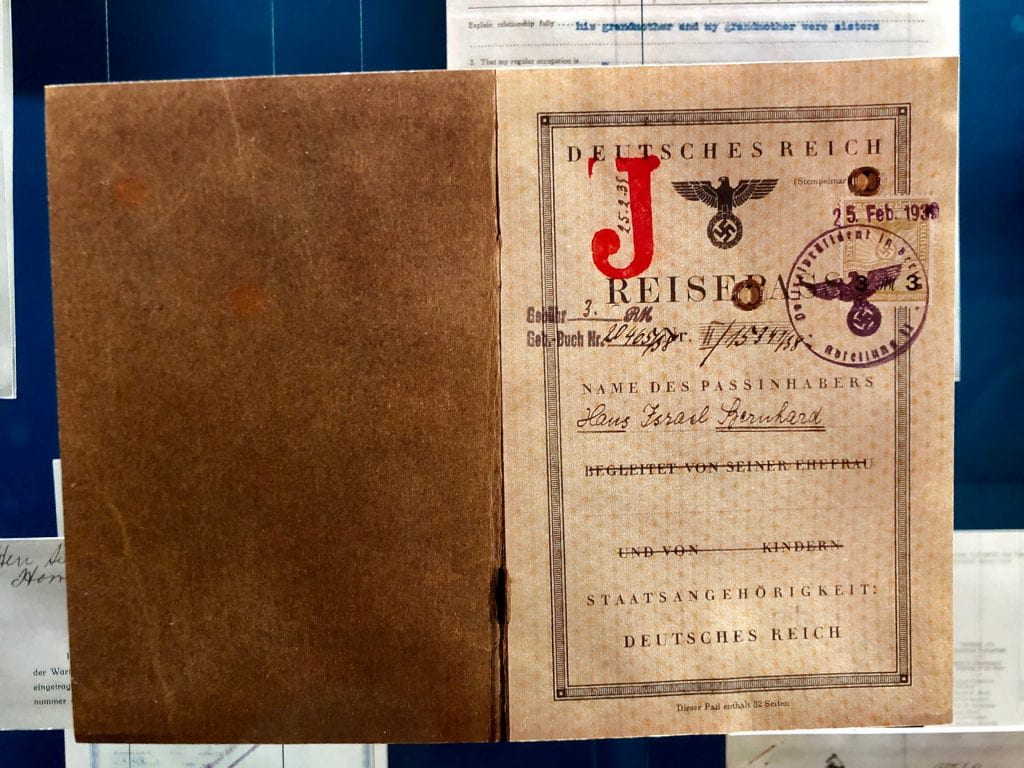
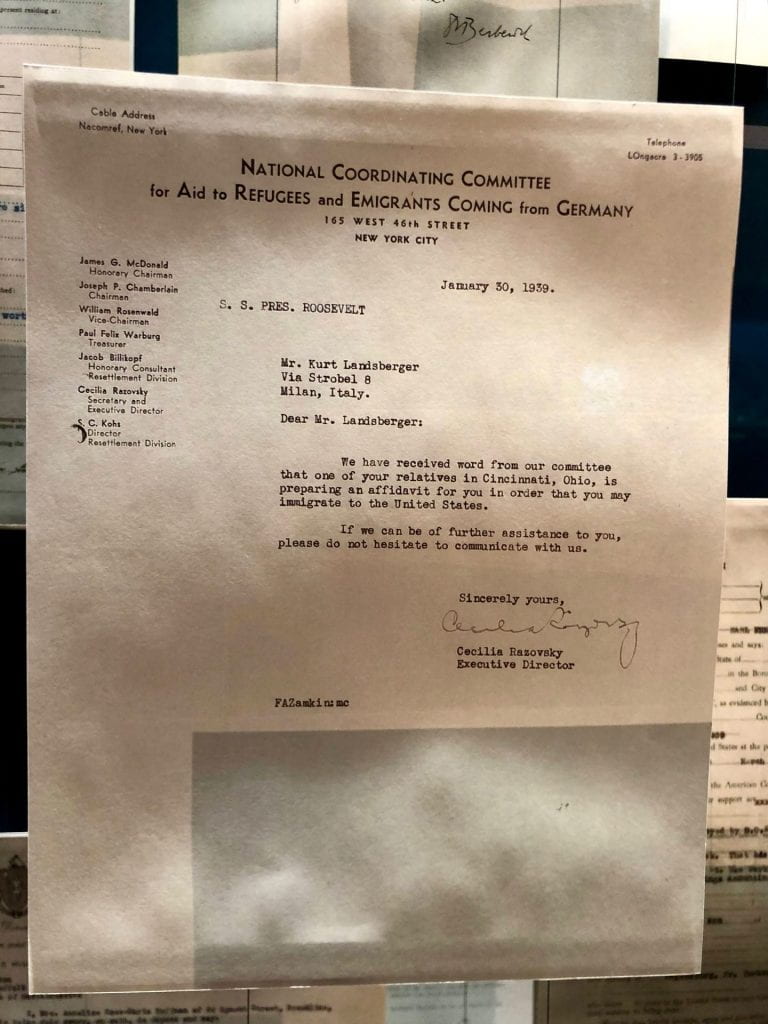
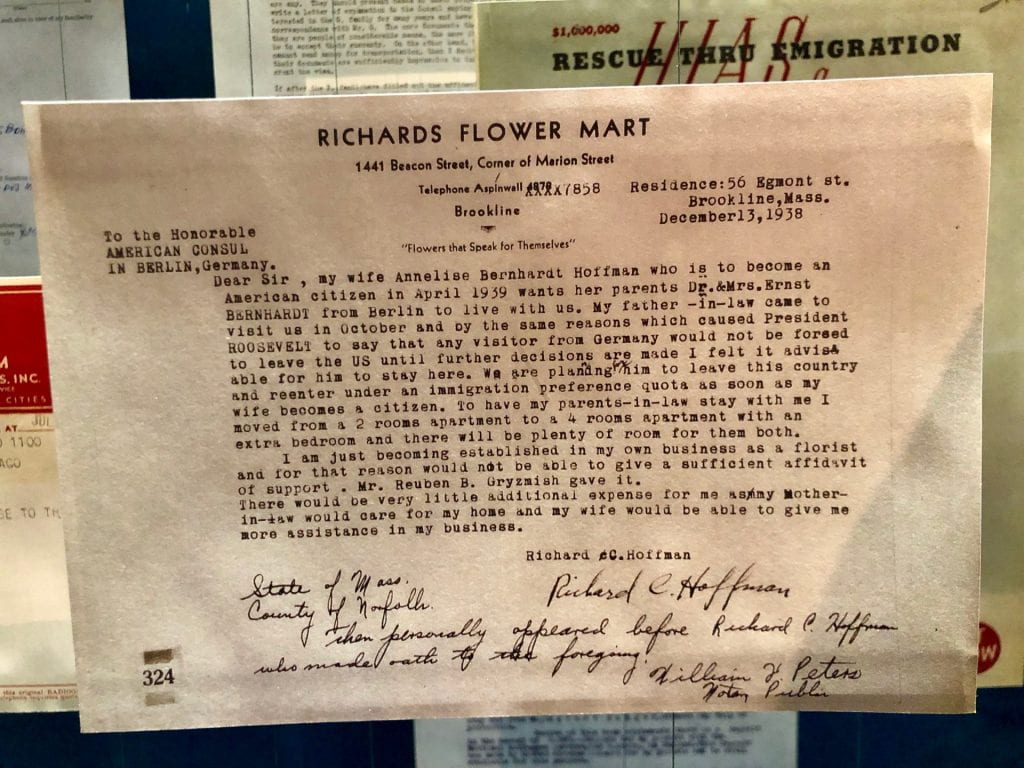
Out of the numerous exhibits I was able to visit throughout the past three days, I learned perhaps the most from this exhibit. As I reflect on how I have taught the Holocaust in previous years I realized that my primary focus with students was within Europe, very little focus has ever been put on the actions or lack thereof of Americans during this time. This will be a critical change I look forward to making in the future. I was stunned when I discovered in November of 1942, the US press was informed that nearly two million Jewish individuals had already been murdered. With numbers as stunning as this, I was even more shocked to learn that many Americans believed that these were just propaganda reports and were created as false news – similar to what occurred during WWI. Knowing that the world was aware of the Nazi atrocities occuring I began to think, could the Allies have stopped the events of the Holocaust? As I continued to explore the exhibit I quickly found the answer – when the Allied armies landed on D-Day, more than five-million Jewish individuals had already been murdered. As the Allies advanced into Europe, the two remaining killing centers were both liberated by the Soviet troops, no US forces ever encoutered a Nazi killing center (killing centers and concentration camps are classified as two different types of camps).

This exhibit was extremely engaging, informative and thought provoking. The online resources are incredibly immense and include a variety of primary sources, videos and interactive features you can explore with your students. If you teach the Holocaust please make sure to check this newest online exhibit out!
After our lunch I was able to spend the last few hours debriefing with my fellow conference attendees about ideas for how we can implement the “Americans and the Holocaust” exhibit into our classrooms. We also ended our time by learning about the variety of opportunities that the museum provides to teachers at the completion of this conference. One program that I found to be of particular interest was a fellowship program for next summer. Those selected as museum fellows travel to Washington D.C. and for five days are fully immersed within historical and pedagogical issues surrounding the Holocaust. The fellows also work together to organize conferences, lead workshops and write curriculum materials. This is an opportunity that I look forward to applying for this fall!
Unfortunately, I had to catch a flight to Boston and had to leave the museum as soon as the conference ended. As I am waiting for my plane at the terminal, I can’t help but feel incredibly fortunate to have the opportunity to attend the Belfer Conference. The experts I have met and the individuals I have learned from have helped me to refocus how I teach about the Holocaust. I am leaving with so many ideas, new teaching strategies and questions I will continue to ponder the answers to. Not only was this conference well-crafted, but I can honestly say this powerful experience has changed my teaching. I want to thank the Arthur and Rochelle Belfer Foundation for funding this conference, as well as the United States Holocaust Memorial Museum for providing this fantastic professional development opportunity. You have helped me to grow as a teacher and a person and I can’t thank you enough for that.
Americans and the Holocaust Interactive Museum Online Exhibit: https://exhibitions.ushmm.org/americans-and-the-holocaust/main
Interactive “What did Refugees Need to Obtain a US Visa in the 1930s?”: https://exhibitions.ushmm.org/americans-and-the-holocaust/what-did-refugees-need-to-obtain-a-us-visa-in-the-1930s
Belfer Conference for Teachers: https://www.ushmm.org/educators/professional-events-and-resources/belfer-educators-conference
